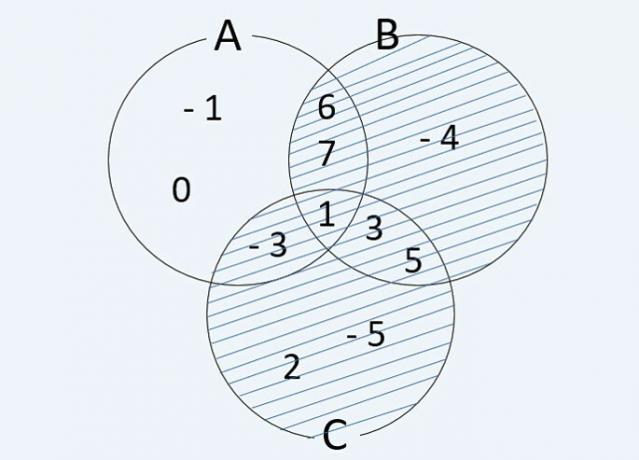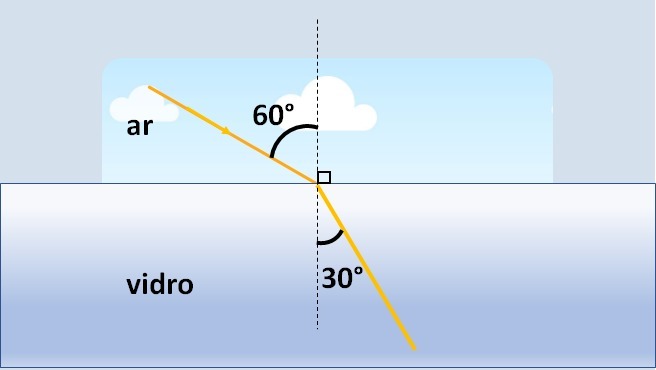Do the exercises on connectives. Check out the commented answers and ask your questions.
Remember: connective is a word, or expression, that connects words or clauses. The use of connectives allows us to organize the ideas of our text.
question 1
Replace the connectives in bold with others, so that the sentences continue with the same meaning.
a) He was the best student, soon receive the merit award.
b) danced It is sang all night.
c) There must be no one at home, why the windows are closed.
d) I tried to explain, but he didn't.
e) Doesn't work nor study.
a) He was the best student, therefore receive the merit award.
“Therefore” and “therefore” are connectives that express conclusion.
b) danced, as also sang all night.
“And” and “as well” are connectives that express sum.
c) There must be no one at home, then the windows are closed.
“Because” and “because” are connectives that express explanation.
d) I tried to explain, although (or: however, nonetheless) he did not.
“But”, “however”, “however”, “nevertheless” are connectives that express opposition.
e) Doesn't work It is do not study.
“Neither” and “and” are connectives that express sum.
question 2
Unite the sentences below through the connectives and turn them into subordinate clauses.
a) Study and you will get good grades. (if)
b) Likes to read and never reads. (although)
c) They invited me and I didn't go. (despite)
d) Nobody wants to leave. I will stay home. (as)
and I want. Buy the candy. (what)
a) If you study, you will get good grades.
We have two sentences: “study” and “you will get good grades”. The use of the connective “if” connects the two. The subordinate clause becomes “if you study”, which expresses condition.
b) Although he likes to read, he never reads.
We have two sentences: “likes to read” and “never reads”. The use of the connective “although” connects the two. The subordinate clause becomes “although I like to read”, which expresses contradiction.
c) Despite being invited, I did not go.
We have two clauses: "they invited" and "I didn't go". The use of the connective “despite” connects the two. The subordinate clause becomes “Although they invite”, which expresses contradiction.
d) Since nobody wants to go out, I'll stay at home.
We have two prayers: “no one wants to go out” and “I will stay at home”. The use of the connective “like” connects the two. The subordinate clause becomes “As nobody wants to leave”, which expresses cause.
e) I want you to buy the candy.
We have two sentences: “I want” and “Buy the candy”. The use of the connective “that” connects the two. The subordinate clause becomes “that you buy the candy”.
question 3
Identify the connectives present in each sentence.
a) Concentration and practice are essential for students.
b) I went back, since there was no one there.
c) Although I wanted to stay, I had things to do.
d) I looked, but I didn't see anything.
e) If he goes, I go.
a) The concentration It is practice are essential for students.
The connective "and" indicates sum.
b) I came back given that there was nobody there.
The connective "since" indicates cause.
w) despite that I wanted to stay, I had things to do.
The connective "although" indicates opposition.
d) I looked but I did not see anything.
The connective "but" indicates opposition.
It is) if he goes, I go.
The connective "se" indicates condition.
question 4
Join the sentences below with connectives that express the ideas indicated in parentheses. Make the necessary changes.
a) Read. Do not understand anything. (opposition)
b) Go now and talk to the trainer. There will be no more opportunities like this. (alternation)
c) It is raining. Clothes on the clothesline got wet. (conclusion)
d) We like to read. We like to listen to music. (addition)
e) We need a doctor. A customer is feeling sick. (explanation)
a) read, although (or: but, still, however) do not understand anything.
“However”, “but”, “nevertheless”, “however” are connectives that express opposition.
b) Go talk to the coach now or there will be no more opportunities like this.
The connective “or” expresses alternation.
c) It's raining soon clothes on the clothesline got wet.
The connective “logo” expresses conclusion.
d) We like to read It is (or: as well as, as also) Listen music.
“And”, “as well as”, “as well” are connectives that express addition.
e) We need a doctor, then a customer is feeling sick.
The connective “because” expresses explanation.
question 5
Use connectives and transform reduced clauses into developed clauses.
a) It's bad to be fighting.
b) As he left, he slammed the door.
c) After class, he left.
d) I imagine I am prepared for the test.
e) By cooking in this way, you will be able to participate in the competition.
Developed clauses begin with a conjunction or a relative noun. Thus, we have:
a) It's bad what let's fight. (relative pronoun)
B) When went out, slammed the door. (conjunction)
w) When Class ended, left. (conjunction)
d) I imagine what be prepared for the test. (relative pronoun)
It is) if If you cook like this, you can participate in the contest. (conjunction)
question 6
Join the sentences using a connective, as indicated in parentheses.
a) The pants ripped. She was old. (cause)
b) Shall we walk? Let's go by car? (alternative)
c) The witness knew the truth. Why didn't she testify? (condition)
d) We should avoid fried foods. Fried foods are bad for our health. (condition)
e) We went the other way. The road was closed. (cause)
a) The pants ripped, why it was old. or The pants ripped, since it was old.
b) Let's walk or by car?
w) if the witness knew the truth, why didn't he testify?
d) if If we do not avoid fried foods, we will be doing harm to our health.
It is) Since the road was closed, we went the other way. or Due to the road being closed, we went the other way.
question 7
In “Wrote so much what made a callus on his finger”, the connective expresses the meaning of:
a) comparison
b) consequence
c) explanation
d) cause
e) condition
The connective "that" could be replaced by another connective that indicates consequence, as shown below.
So that: He wrote so much, so that made a callus on his finger.
So that: He wrote so much, so that made a callus on his finger.question 8
In “Let’s Clear It All Up” as soon as the teacher arrives”, the connective expresses the meaning of:
the condition
b) comparison
c) purpose
d) explanation
it's time
The connective "as soon as" could be replaced by another connective that indicates time, as shown below.
As soon as: Let's clarify everything once the teacher arrives. When: Let's get it straight when the teacher arrives.question 9
In “I was later than the custom”, the connective expresses the sense of:
a) comparison
b) cause
c) compliance
d) consequence
e) explanation
The connective "than" could be replaced by another connective that indicates comparison, as shown below.
that: I was late what the custom.
question 10
In "as he grows, the more determined he becomes”, the connective expresses the meaning of:
in time
b) consequence
c) proportion
d) explanation
e) cause
The connective "As" could be replaced by another connective that indicates proportion, as shown below.
To the extent that: to the extent that he grows, the more determined he becomes.
How much more: How much more he grows, the more determined he becomes.
Read too:
Connectives for writing: list and types
Conjunction exercises (with feedback)
FERNANDES, Marcia. Exercises on connectives (with commented template).All Matter, [n.d.]. Available in: https://www.todamateria.com.br/exercicios-sobre-conectivos/. Access at:
See too
- 20 conjunction exercises (with feedback)
- Connectives for writing: list and types
- Reading Interpretation Activities for 9th Grade
- Figure of speech exercises
- crase exercises
- Text interpretation exercises
- Subordinate clause exercises (with feedback)
- Adverbial subordinate clause exercises (with feedback)


